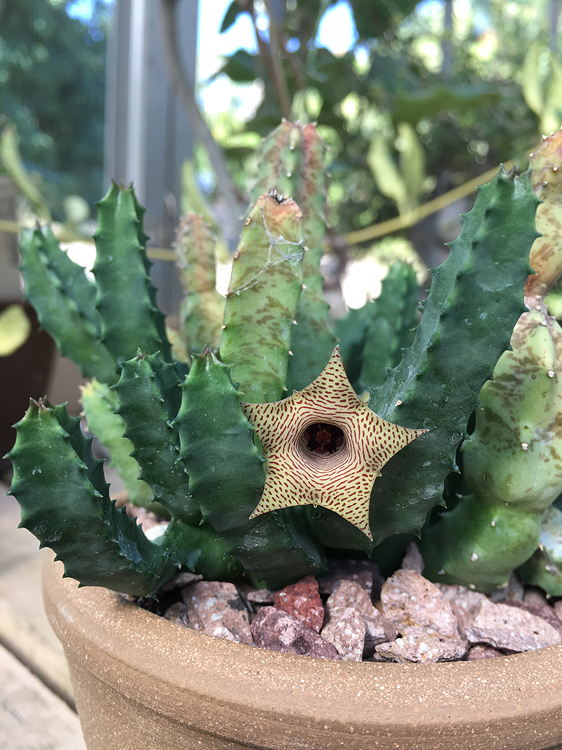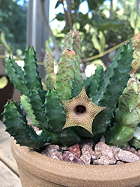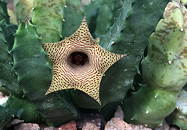Many of the stapeliads have a macabre appeal because of their carrion-scented flowers. Sorry to disappoint, but huernias are the exception, with flowers usually lacking any aroma, to the human nose, at least. Like other stapeliads, huernias are pollinated by species of flies, undoubtedly responding to some attractant. In addition, there is the visual appeal of the flowers, which in Huernia thuretii, though they are relatively small (2 cm or less ø), have a mesmerizing pattern of dark lines on a pale background. The stems of this species, as well as some other huernias, are often 4-angled, which gives them a very tidy symmetry. We offer divisions of HBG 102180, a plant collected by Dr. Ingo Breuer (#10817) north of the place with the intriguing name of Bonkolo Nek, Eastern Cape Province, South Africa. Bonkolo is a Zulu name, while Nek is Afrikaans for neck in reference to the mountain pass. $8.

Published in the Cactus and Succulent Journal, Vol. 93 (2), Summer 2021

